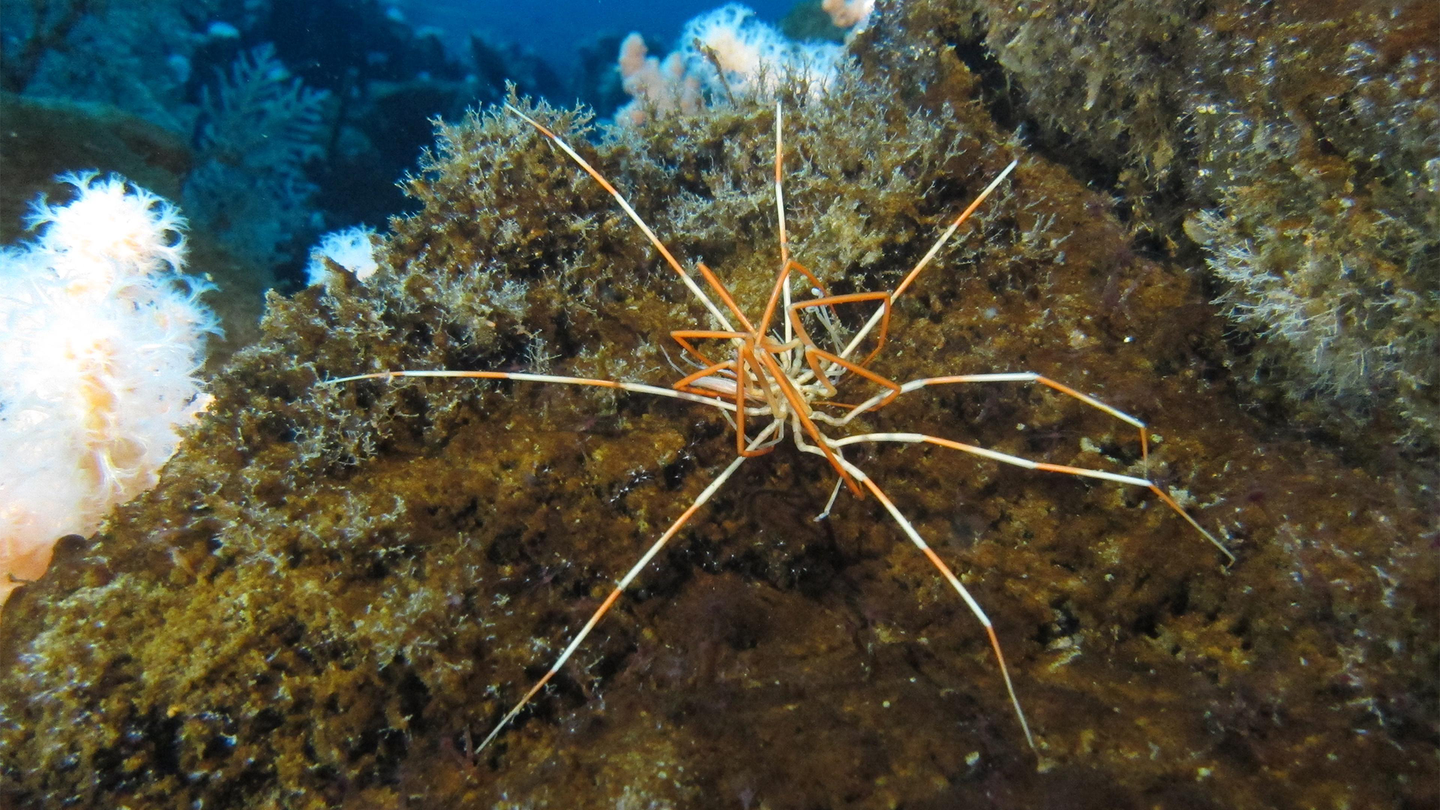Giant Antarctic sea spiders’ reproductive mystery solved after 140 years of confusion
These large invertebrates are fairly devoted dads.

The reproduction of giant sea spiders in Antarctica has been a puzzle for over a century. Studying their habits requires deep dives under thick Antarctic ice in frigid ocean temperatures. Now, a group of scientists may have finally solved the 140-year-old mystery of why the giant sea spiders lay their eggs on the bottom of the seafloor, unlike other sea spider species who carry them around. The findings are described in a study published February 11 in the journal Ecology.
[Related: Sea spiders use their guts to pump oxygen through their freaky little bodies.]
Polar giants
Sea spiders belong to a group of invertebrates found in marine habitats around the world. These marine arthropods are in the order Pantopoda. They are related to, but not the same as land spiders who are in the order Arachnida.
While most sea spider species are smaller than a human fingernail, Antarctica’s giant sea spiders (Colossendeis megalonyx) have a leg span that is more than one foot apart. They can grow up to 20 inches wide, or the size of a dinner plate. C. megalonyx is a famous example of polar gigantism–where certain organisms in the Arctic and Antarctic grow larger than their relatives in warmer regions. Living on a diet of sea anemones, jellyfish, and other invertebrates.

C. megalonyx’ above average size and a unique parenting style sets them apart from other animals, not just those that live at the poles. Many sea spider species carry their eggs around until they hatch, in a behavior biologists call brooding.
“In most sea spiders, the male parent takes care of the babies by carrying them around while they develop,” study co-author and University of Hawaiʻi at Mānoa marine invertebrate ecologist Amy Moran said in a statement. “What’s weird is that despite descriptions and research going back over 140 years, no one had ever seen the giant Antarctic sea spiders brooding their young or knew anything about their development.”
Collecting mating spiders
In October 2021, Moran and PhD students Aaron Toh and Graham Lobert dove under thin ice during a field expedition in the Antarctic. They hand-collected groups of giant sea spiders that appeared to be mating and took them back to tanks for observation.
“We were so lucky to be able to see this,” Toh said in a statement. “The opportunity to work directly with these amazing animals in Antarctica meant we could learn things no one had ever even guessed.”

The two different mating groups produced thousands of eggs in a gelatinous cloud. One parent–likely the father–spent two days attaching the eggs to the rocky bottom of the tank. There, the eggs developed for several months before hatching as tiny larvae.
After a few weeks, the eggs became overgrown with microscopic algae. This created the perfect camouflage to keep them hidden from predators including sea stars, rays, and crabs. The protective camouflage explains why the eggs can be left on the floor and why it has been harder for researchers to spot them.
[Related: What an ancient jawbone reveals about polar bear evolution.]
“We could hardly see the eggs even when we knew they were there, which is probably why researchers had never seen this before,” Lobert said in a statement.
Taking care of embryos this way may represent a middle-ground breeding strategy. It could be a step between free spawning–where larvae are shot out into the water like in corals–and the brooding that sea spiders and octopuses perform. This first glimpse of their reproductive strategy is important for learning more about the biology and natural history of these and other animals living in polar regions.
